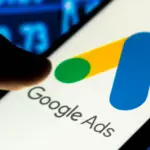
Running advertisements on Google might feel like jumping into a pool without knowing how to swim. With all the campaign types, bidding options, and settings, it is easy to feel lost. But fear not! This guide breaks down Google Advertising into a simple, step-by-step roadmap. By the end, you will know exactly how to launch your first campaign and start generating leads, sales, or website traffic like a pro.
What You Need Before You Start
Before you dive in, gather your essentials:
- A Google account (for example, Gmail).
- A Google Ads account (you will create this during setup).
- A website or landing page to direct visitors, or Google Lead Forms.
- A payment method for billing.
- Conversion tracking installed via Google Tag or Google Tag Manager to measure results.
Tip: Conversion tracking acts as your campaign’s crystal ball—it shows which ads are delivering results.
Step 1: Create Your Google Advertising Account
- Visit ads.google.com and log in with your Google account.
- The stepping stone, enter your basic business details including name, country, and billing information.
- Skip initial campaign creation prompts if you want to set up campaigns later.
Pro Tip: Keep your currency and time zone correct—you do not want to chase imaginary dollars!
Step 2: Set Up Conversion Tracking
Conversion means achieving your advertising goal—like a purchase, form submission, or newsletter signup. Conversion tracking tells you which ads are actually delivering results.
- Use Google Tag for tracking.
- Verify your Pixel is receiving at least PageView events.
- if you are optimizing for sales or leads, never miss to Set your primary event.
Step 3: Choose Campaign Objective and Type
Ensure you choose your campaign objective in tune with your business goals:
- Lead Generation or Sales: Capture potential customers or make sales.
- Website Traffic: Drive visitors to your website.
- Brand Awareness: Increase visibility and recognition.
Beginner-friendly campaign types:
- Search Campaigns: Show ads to people actively searching for your products.
- Performance Max Campaigns: Google automatically runs your ads across Search, YouTube, Gmail, Display Network, Discover, and Google Maps using machine learning. Your role is just to provide goals, audience signals, budget, and creatives, and let Google optimizes the rest for you.
Tip: Start with Search Campaigns for control, then try Performance Max for broader reach.
Step 4: Decide on Your Budget & Bidding Strategy
- Maximize Conversions: Automated bidding for beginners.
- Target Cost Per Acquisition (CPA) or Target Return on Ad Spend (ROAS): Advanced strategies.
- Manual Cost-Per-Click (CPC): Full control, for experienced users.
Always start small, keep an eye on results, and in steps increase your budget.
Step 5: Build Your Campaign
- Click Create → Campaign → Objective → Campaign Type.
- Name your campaign clearly,
e.g., September2025_LeadGeneration_Search. - Set audience location, demographics, and relevant keywords.
- Add negative keywords to block irrelevant clicks.
- Create two to three ads per ad group with multiple headlines and descriptions.
Step 6: Create Ads That Convert
- Write 3–5 engaging headlines and 2 compelling descriptions per ad.
- Highlight benefits that solve customer problems or add value.
- Include a clear call-to-action (CTA) like “Sign Up Now” or “Get Started Today.”
- Ensure the ad text matches your landing page content.
Example:
- Headline: “Free Digital Marketing Workshop”
- Description: “Live session with experts. Limited seats. Register today!”
Step 7: Quality Assurance and Launch
Before publishing:
- Check that the landing page loads quickly.
- Verify conversion tracking works.
- Confirm budget, dates, and bidding strategy.
- Proofread ad copy and check for policy compliance.
Step 8: Monitor and Optimize
- First three days (learning stage): Avoid major edits while Google gathers data.
- Week one: Monitor click-through rate (CTR), cost per click (CPC), and conversions.
- Weekly: Add negative keywords, refresh ad creatives, and adjust budgets.
- Monthly: Review results and optimize bidding strategies.
Step 9: Common Mistakes to Avoid
- Forgetting conversion tracking.
- Choosing the wrong campaign objective.
- Making too many changes during the learning phase.
- Ignoring negative keywords.
- Expecting instant results—ads need time to learn.
Step 10: Quick Checklist for Beginners
- Create Google Ads account and add billing.
- Install conversion tracking.
- Define campaign objective and type.
- Select audience, keywords, and negative keywords.
- Design a few ads for each ad group (aim for 2–3) & ensure each has its landing page.
- Set budget and bidding strategy.
- Review and publish campaign.
- Monitor first 72 hours and optimize weekly.
Conclusion
Launching your first Google Ads campaign might feel like stepping into a maze, but with this beginner-friendly guide, you now have a roadmap. Start with clear goals, choose the right campaign type, and focus on building engaging ads with relevant keywords and landing pages.
Conversion tracking is your guiding compass, and regular monitoring helps you make data-driven decisions. Experiment, optimize, and let Google’s algorithms do some of the heavy lifting. Over time, you will reach the right audience, control your budget, and maximize return on investment.
Remember: Consistency and smart optimization turn Google Ads into a powerful tool to grow your business online—so get started today and watch your campaigns take off!






0 Comments